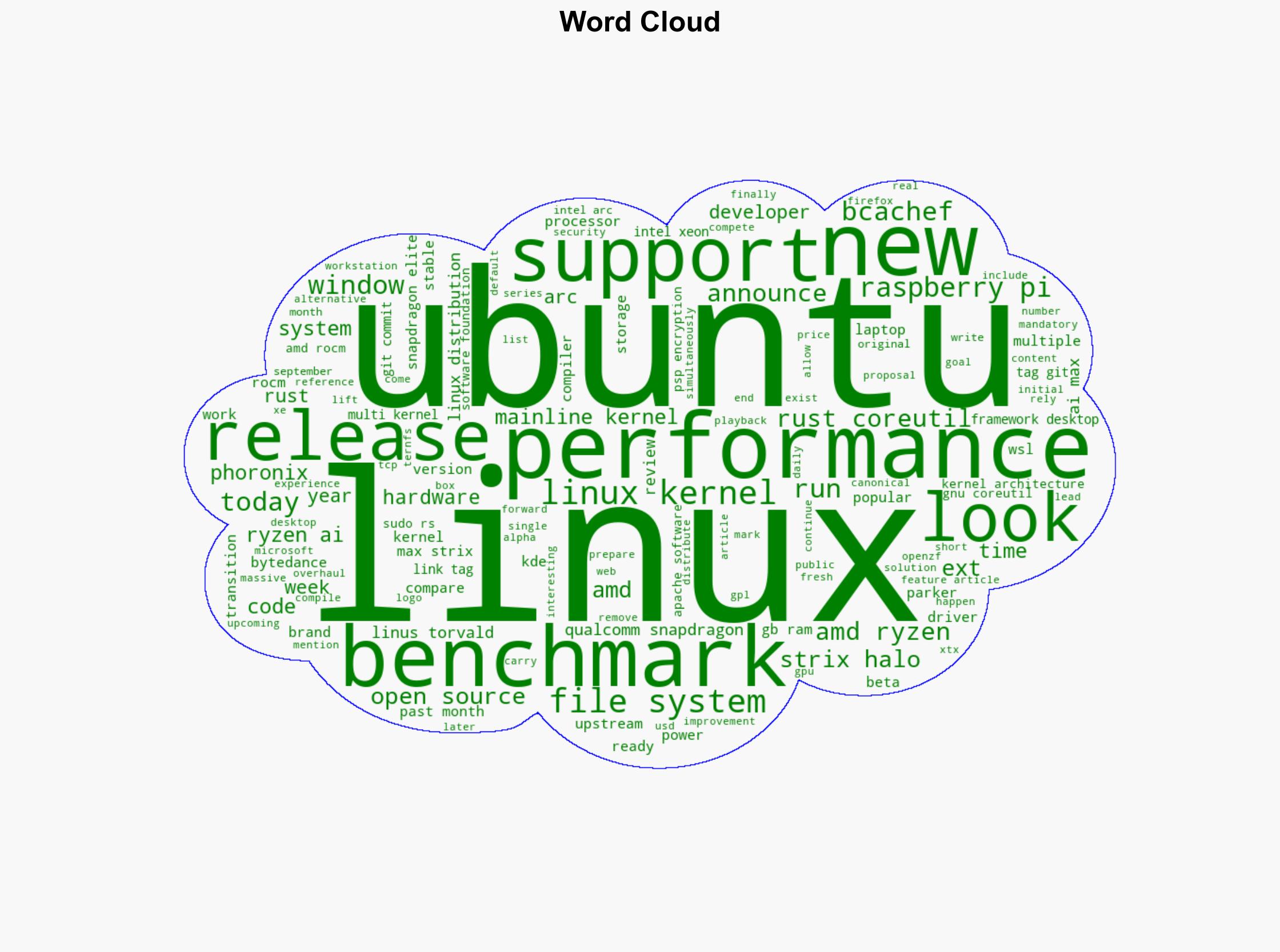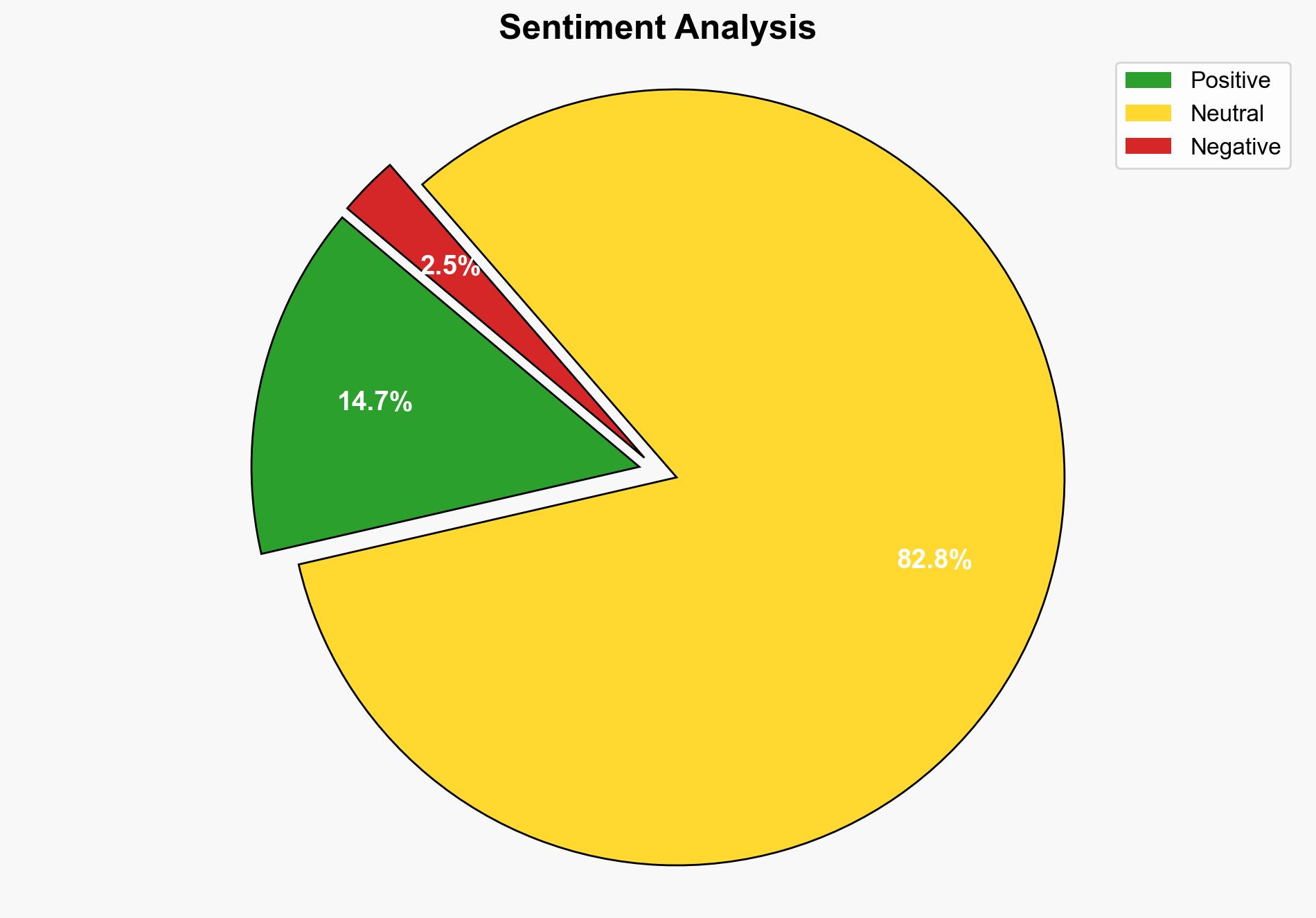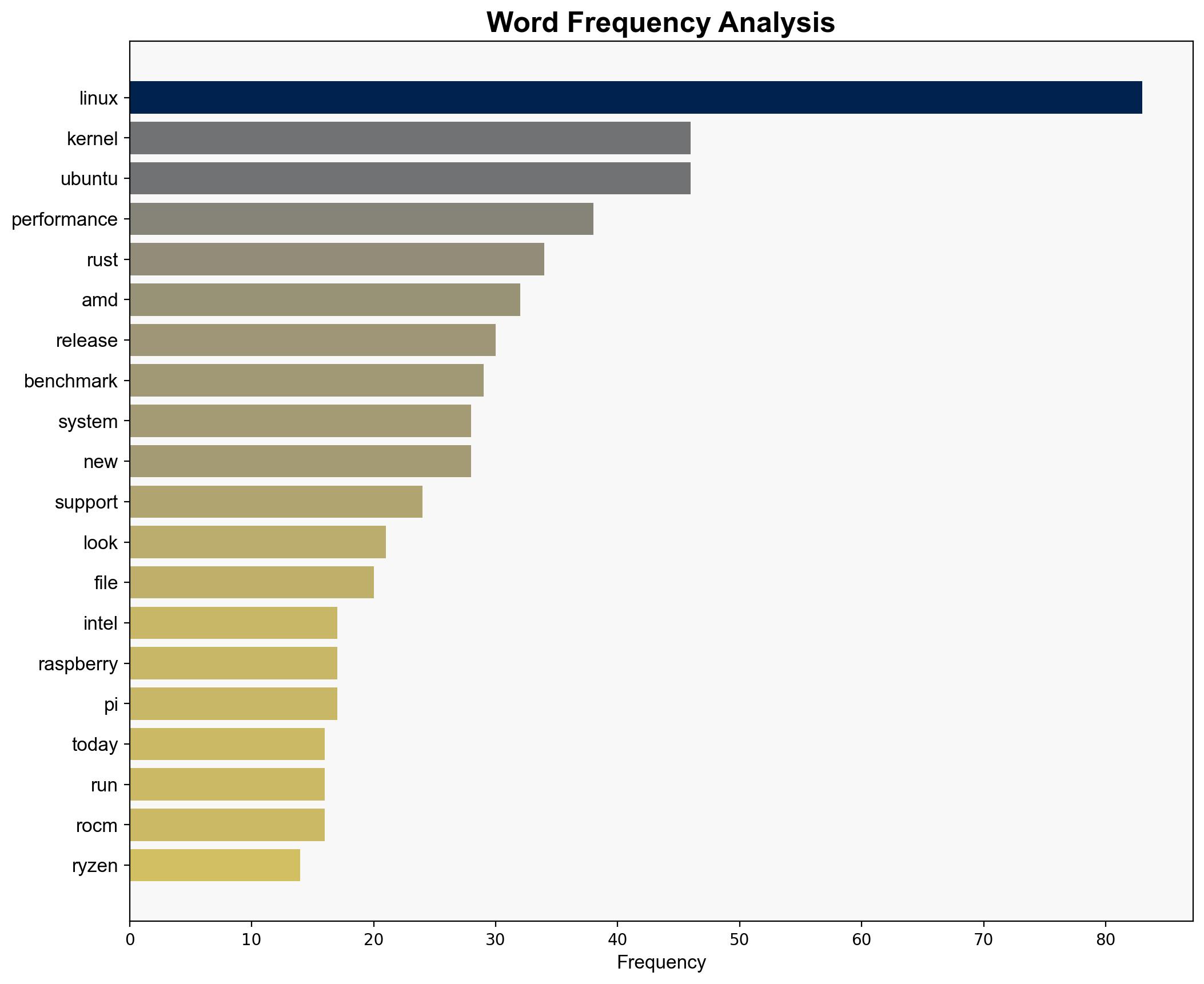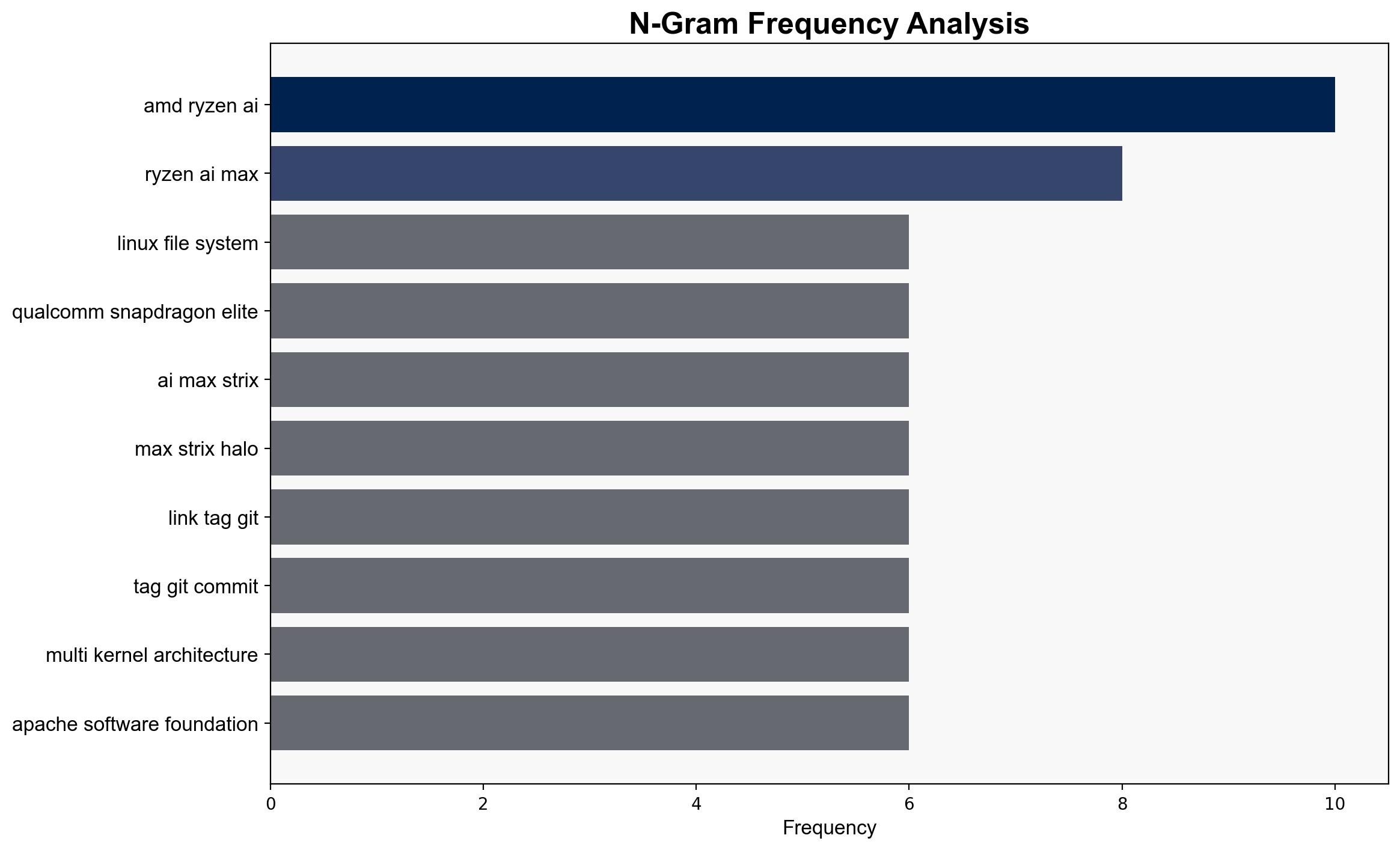Intel Arc Pro B50 Raspberry Pi 500 Strix Halo Other September Highlights – Phoronix
Published on: 2025-10-01
Intelligence Report: Intel Arc Pro B50 Raspberry Pi 500 Strix Halo Other September Highlights – Phoronix
1. BLUF (Bottom Line Up Front)
The analysis suggests that the primary strategic development is the increasing competitiveness of Linux-based systems against traditional Windows platforms, driven by advancements in hardware compatibility and performance benchmarks. This trend is supported by the growing support for Linux in new hardware releases from major tech companies like Intel and AMD. Confidence level: Moderate. Recommended action: Monitor the adoption rates of Linux systems in enterprise environments and assess potential impacts on software ecosystems and cybersecurity strategies.
2. Competing Hypotheses
Hypothesis 1: The advancements in Linux compatibility and performance are primarily driven by consumer demand for open-source solutions and dissatisfaction with current proprietary systems.
Hypothesis 2: Major tech companies are strategically investing in Linux compatibility to diversify their product offerings and reduce dependency on Windows, anticipating a shift in market dynamics.
Using ACH 2.0, Hypothesis 2 is better supported due to the strategic moves by companies like Intel and AMD to include Linux support in their latest hardware releases, indicating a proactive approach rather than a reactive one to consumer demand.
3. Key Assumptions and Red Flags
Assumptions include the belief that Linux will continue to improve its user experience and performance metrics, and that tech companies will maintain their investment in open-source compatibility. A red flag is the potential overestimation of consumer willingness to transition from established systems like Windows to Linux, which could skew market predictions.
4. Implications and Strategic Risks
The increased adoption of Linux could lead to a more fragmented software ecosystem, posing challenges for cybersecurity standardization. Economically, this shift could disrupt traditional software licensing models, impacting revenue streams for companies reliant on proprietary systems. Geopolitically, the open-source nature of Linux may influence national policies on software procurement and data sovereignty.
5. Recommendations and Outlook
- Encourage enterprises to evaluate the feasibility of integrating Linux systems to diversify their IT infrastructure.
- Develop cybersecurity frameworks that accommodate a mixed-OS environment to mitigate potential vulnerabilities.
- Scenario Projections:
- Best Case: Seamless integration of Linux systems leads to enhanced innovation and reduced software costs.
- Worst Case: Fragmentation results in increased cybersecurity risks and operational inefficiencies.
- Most Likely: Gradual increase in Linux adoption with parallel improvements in compatibility and support.
6. Key Individuals and Entities
Intel, AMD, Microsoft, Canonical, Qualcomm.
7. Thematic Tags
national security threats, cybersecurity, open-source adoption, technology market dynamics





